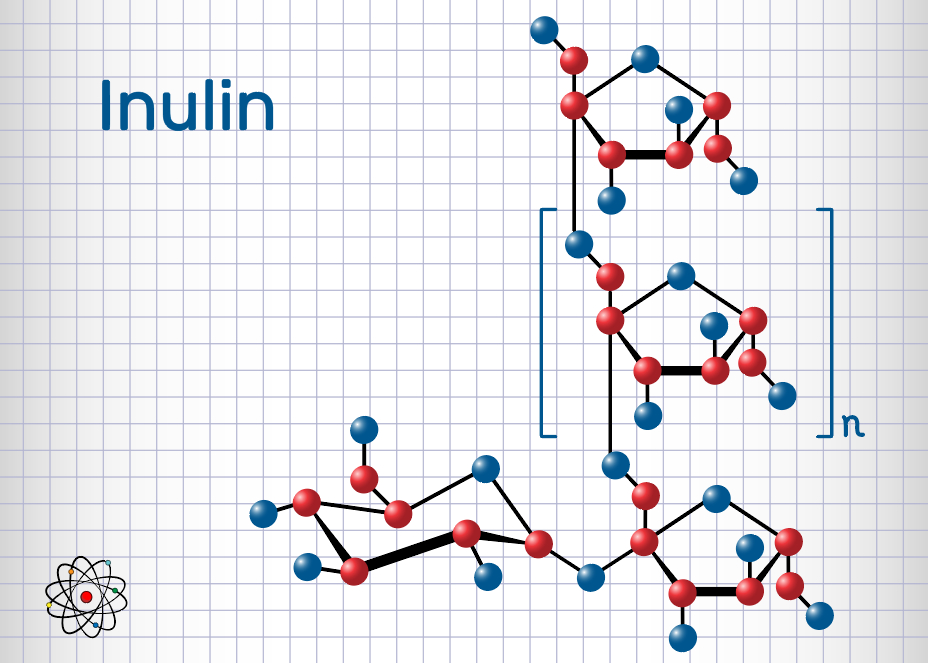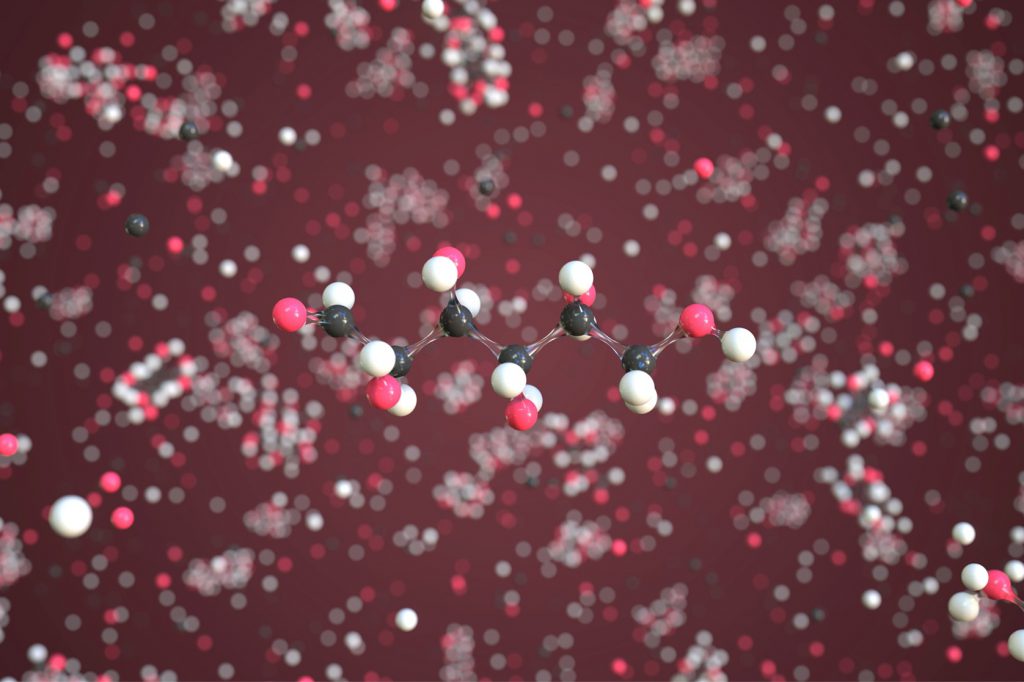Connie: Dear friends, thank you for tuning in to our program on this beautiful Saturday evening. For the audience who have been following our program, in recent episodes, our topics have been revolved around probiotics and prebiotics. And today, we again invited Dr. Hofstadter to talk about the many kinds of carbohydrates that belong to prebiotics. Thank you for joining us this evening, professor.
Dr. Hofstadter: Thanks for inviting me, Connie. It is quite nice to see you again. I’m very excited to be here.
Connie: In the previous program, we talked about the basics of prebiotics and their various physiological beneficial effects. We learned that prebiotics is oligosaccharides extracted from the plant and mammalian milk or industrially synthesized by enzymatic hydrolysis. Prebiotics are the main part of fermented products. Because they cannot be digested by enzymes in the upper digestive tract, they are fermented by microorganisms in the intestine. We also learned that only a few indigestible carbohydrates such as lactulose, inulin, fructooligosaccharide, lactulose, lactose, resistant starch, and galactooligosaccharide belong to the prebiotics category. In today’s program, we will discuss various classifications of prebiotics. But before we get into the classification, what can you tell us about prebiotics structurally, Dr. Hofstadter?
Dr. Hofstadter: Prebiotics are generally low-molecular-weight, non-digestible oligosaccharides. They consist of a variable number of carbohydrate units in the range of 3 to 9. Lactulose is the first candidate. It is an artificial disaccharide synthesized by the isomerization of lactose. Structurally, lactulose is connected to fructose via β-1,4 glycosidic bonds by galactose units. It is produced by the action of glucose isomerase and β-glycosidase on whey lactose. As one of the classic prebiotics, lactulose is indigestible to human β-galactosidase, so it will not be hydrolyzed in the intestine. It is fermented by the intestinal microflora to achieve its probiotic effects such as enhancing immunity and inhibiting pathogenic bacteria.
Connie: We all know that lactose is a synthetic oligosaccharide composed of glucose, fructose, and galactose. It is synthesized by a mixture of sucrose and lactose with the help of the enzyme β-fructose-furanosidase. How does the fermentation product of lactose benefit the intestines?
Dr. Hofstadter: It’s usually by lowering the pH value, pathogenic bacteria, and promoting mineral absorption. In order to evaluate the probiotic effects of lactose, different in vivo and in vitro studies have been carried out. It has been reported that sucrose and its analogs can promote the growth and activity of bifidobacteria and lactobacilli.
Connie: Inulin is also one of the potential candidates for prebiotics. Remind us where we can find it?
Dr. Hofstadter: Inulin is a plant-derived fructan, which is stored in the plant as a nutrient substance. It is usually found in fruits, vegetables, and edible grains such as wheat, garlic, chicory, onions, leeks, and bananas. It is synthesized when the demand for sugar for photosynthesis increases. Structurally, inulin is a linear oligosaccharide composed of fructose monomers with β-2,1 bonds, with different degrees of polymerization.
Connie: Which bacterial species can inulin stimulate or inhibit growth?
Dr. Hofstadter: Inulin has been reported to stimulate bifidobacterium and lactobacillus in the intestines. This has beneficial effects on infants, adults and the elderly. In addition, in vivo and in vitro studies on the feces of a model with inulin and probiotics have shown that inulin can also inhibit the growth of decaying and disease-causing bacteria in the intestinal tract. This helps maintain a healthy microbiota in the digestive tract.
Connie: Let’s move on to the next prebiotics. How about galacto-oligosaccharides?
Dr. Hofstadter: Good choice. They are composed of galactose units that are naturally present in the milk of mammals such as humans and cattle. In industry, they are synthesized by the action of β-galactosidase on lactose.
Connie: Tell us about the function of the fermentation product of galacto-oligosaccharide?
Dr. Hofstadter: Its fermentation product can enhance probiotics such as Bifidobacterium, Enterobacter and Lactobacillus so that they can produce vitamins, minerals, and provide immunity to the host.
Connie: Can infants also take galacto-oligosaccharides?
Dr. Hofstadter: Certainly. It is reported that administering galacto-oligosaccharides to infants can stimulate the intestinal flora, similar to bifidobacteria in breastfed infants. They can also inhibit pathogens in the gut because they mimic the pathogen’s sugar-conjugated cell surface receptors. It was observed in a study that infant feed made by adding artificial prebiotics can be similar to breast milk, especially in terms of the bifidus effect. And based on this study, a prebiotic mixture of different concentrations of inulin and galacto-oligosaccharides was prepared. In terms of oral administration, the mixture exhibits a probiotic effect in increasing intestinal bacteria and feces. The feces of these babies are similar to those of breastfed babies.
Connie: I heard that soy oligosaccharides can also cause a bifidus effect in the colon?
Dr. Hofstadter: That’s right. Soy oligosaccharides are oligosaccharides found in soy whey during the production of soy protein. They are composed of galactose and sucrose units. Soy oligosaccharide includes verbena, raffinose, and stachyose, also known as oligosaccharides in the raffinose family. Because the human digestive system lacks the α-galactosidase enzyme needed to digest soy oligosaccharides, they can reach the colon directly and trigger Bifidus effect.
Connie: And what about xylo-oligosaccharide? Is it also an important member of the prebiotics family?
Dr. Hofstadter: Xylo-oligosaccharides are fermented by Bifidobacterium and Lactobacillus. It is an indigestible dietary fiber because humans lack xylosidase for digestion. According to some reports, after intestinal bacterial fermentation, xylo-oligosaccharide exhibits a Bifidus effect in the intestinal tract. Some researchers have used the live body of weaned piglets to study them. And the results showed that taking xylo-oligosaccharide can stimulate the microbial community, inflammation and intestinal barrier. And they are also believed to help prevent intestinal dysfunction.
Connie: Interesting. And next on my list is isomalto-oligosaccharides. What are their functions?
Dr. Hofstadter: Isomalt-oligosaccharides are starch-derived oligosaccharides, which are monomers connected by glucose units through α-(1, 6) glycosidic bonds. Isomalt-oligosaccharide resists the digestion of the intestinal microflora and enables them to enter the colon, thereby producing a bifidism effect. In addition, isomalt-oligosaccharides are low calorific value probiotics. Mainly because they have therapeutic values, such as promoting gastrointestinal function and mineral absorption, reducing blood sugar levels and cholesterol levels in the host.
Connie: I think most of them we have just talked about are all oligosaccharides. Can polysaccharides such as starch also be used as prebiotics?
Dr. Hofstadter: That’s a good question. Resistant starch is prebiotics. It is similar to the chemical structure of starch. It is arranged in the form of polymer particles, giving it the advantages of both soluble and insoluble fibers.
Connie: Does resistant starch have any therapeutic effects?
Dr. Hofstadter: The therapeutic effects of resistant starch include regulation of cholesterol levels, blood sugar control, blood triglyceride levels, and mineral absorption. Studies evaluating the probiotic effects of lactose have shown that it tends to stimulate probiotics in the intestines, such as lactic acid bacteria and bifidobacteria, to enhance gastrointestinal function.
Connie: In the last program, you mentioned that some algae also have the effect of prebiotics. Can you tell us more about it?
Dr. Hofstadter: Yes. There are many kinds of microalgae, such as Chlorella, spirulina, and other edible microalgae, which are rich in protein, carotene, various vitamins, algal polysaccharides, polyunsaturated fatty acids, and chlorophyll. The protein content of microalgae is very high. The polysaccharide complex contained in microalgae can be used as an immune adjuvant to enhance antigenicity and immune function, play an anti-tumor role and increase its value as a prebiotic. The content of carotenoids in microalgae is very high, which plays a role in coloring and nutrition. Some microalgae prebiotics such as spirulina can be selectively absorbed into the body, so increasing the number of bifidobacteria and enhancing the immune ability of the body.
Connie: We know that some prebiotics is extracted from natural plants, such as Chinese herbal medicine. Can you elaborate a bit more on this?
Dr. Hofstadter: of course. In recent years, there has been an upsurge in using natural herbal medicine to prevent and treat various diseases all over the world. Chinese herbal medicine is a type of substance with dual functions of nutrition and medicine. It can regulate the balance of intestinal flora and improve the morphological structure of the intestinal tract. The active ingredient extracts of Chinese herbal medicine and natural plants can be used as important prebiotic products.
Connie: We went over many prebiotics in this episode. Let me briefly summarize. Various indigestible oligosaccharides, such as lactulose, inulin-type fructans, and galactooligosaccharides are potential candidates for probiotics. Among all inulin types, galactooligosaccharides and fructooligosaccharides are the most commonly used because they satisfy the basis of prebiotics. In addition, resistant starch is very important for enhancing gastrointestinal function. Some algae and natural plants also form an important part of prebiotics.
Dr. Hofstadter: You did a very good job summarizing every key point we’ve talked about today.
Connie: Thank you. So that’s it for us today. Thanks, Dr. Hofstadter for being here and introducing the amazing prebiotics to us. And thanks everyone for listening. Next Saturday night, we will continue to explore the therapeutic effect of prebiotics. See you then!
Dr. Hofstadter: Thanks everyone. I hope we will see you next time.
